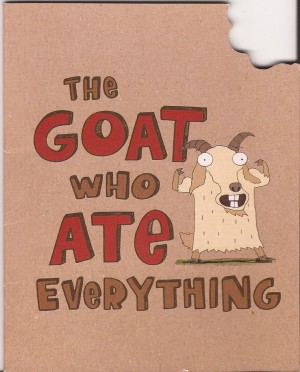The Rise Of Creative Content
Do Your Blog Posts Need A Story Structure?
How Authors Can Use Google Books For SEO And Gain Readers
Let’s just go ahead and slice the gizzard out of that thought you have right now. I AM NOT talking about creative content marketing.
What I want to discuss today is creative content. It’s marketing, yes. But the emphasis is less on the marketing and more on the creative content.
I’ll say this: I’ve had the idea for a few years now. Some clown named Ronald McDonald confirmed it for me over the weekend. Actually, it was Ronald’s corporate slave master symbolized in that fast food icon known as the Golden Arches. They confirmed it for me.
You see, I picked my grandkids up on Friday night and took them to McDonald’s for dinner. Of course, at the ages of 6 and 10, the two youngest wanted happy meals (the oldest, 11, ordered two McChickens).
What does McDonald’s put in their happy meals? Yep, toys. Usually.
In this case, the franchise put books in the happy meals. Yippee! I love books. So do the kids.
It was a really cute book, too. The title? “The Goat Who Ate Everything.”
I won’t give away any spoilers (in case you haven’t made it to McDonald’s yet), but this little book is an example of what I mean by creative content. Its purpose was to serve as a valuable freebie so that McDonald’s customers keep coming back for those little nuggets. And it works.
Why Creative Content Works
How many times have you heard a young child say, “Mom, I don’t want to go to McDonald’s; I’m really getting tired of their happy meals.”?
My guess is never, right?
“Holy crap! I can’t eat another nasty Sweet Chili Chicken McWrap. It’s the third one this week!”
It’s annoying, I know. But it works for McDonald’s because the kids want to go back. And the parents are like, “Holy crap! I can’t eat another nasty Sweet Chili Chicken McWrap. It’s the third one this week!” But … you end up going to McDonald’s anyway and ordering your Sweet Chili Chicken McWrap with extra chicken because you’re addicted to seeing your children smile for 10 minutes while you guzzle a gallon of Habanero Ranch Sauce with your fresh-out-of-the-grease-vat French fries.
To quote that little village on that famous old-fashioned TV show (you know, the one that set the record for the most straw hats in one episode?):
Saaa-aalllute!
Yep, creative content works because it gets people coming back for more even when they know “more” leads to a massive coronary and permanent liver loss. The fine folks over at Anheuser-Busch know that.
Time To Get Digitally Creative
So what’s my bright idea for the digital age? If you guessed “creative e-books,” then you’d be on the right path.
Remember in the old days when businesses, governments, and kings and queens (and various and sundry other rich folks with too much time on their hands) would offer a patronage to an artist they liked? Yeah, it was before my time too. But rich people did that at one time. Nowadays, artists beg for money from poor people (and cheeky mid-managers).
At any rate, patrons. They’re a real godsend.
So here’s what I’m thinking. What if businesses that wanted to do a struggling artist a good turn AND put a little juice in their marketing mojo invested in a little creative content similar to “The Goat Who Ate Everything?”
This creative content could take many forms. It could be a YouTube short chick flick (perfect if you sell mini-skirts), a scary podcast (because nothing is more terrifying than health food), a collection of short stories, poetry, visual art, crafty jewelry, animated stories for children, or something I’m missing because my brain is frazzled from eating too many breakfast tacos. The sponsor gets big billing for funding the endeavor while the artist gets a little recognition and the customer walks away with a warm fuzzy in the shape of a mobile app. Thanks for the kiss, Mrs. Robinson!
There are all sorts of ways this creative content could take shape. Here are just a few off the top of my pointy little head.
- Sponsor a poetry or fiction e-book. The poet/fiction writer can distribute the book free of charge on his or her website and through Smashwords. You get a little extra exposure for your business to a new potential customer base that you couldn’t reach any other way.
- Pay for YouTube video product placement. There are some rules attached to this option, but the gist is you pay a YouTube partner (with YouTube’s approval) to mention your product somewhere in their regular programming. The creative part is your choice of partner. Instead of going for the easily identifiable targeted content niche, how about funding an artist or other creative channel that appeals to the same audience as your product or service? Much in the same way that a television sponsor might buy an ad to run during a particular prime time drama.
- Choose a podcast that delivers creative content and sponsor that podcast through a direct sponsorship deal like this one.
- Start your own creative podcast or YouTube channel. This one can be tricky because the natural inclination is to start a podcast or YouTube channel centered around your niche. That might work for you, but it won’t necessarily work for everyone. It’s hard to come up with consistent creative content to make ball bearings fun and interesting, for instance. But what if you started a podcast or YouTube channel that focused on the artistic processes of industrial artists? Each week you could feature a different music artist, visual artist, poet, etc. who works within the “industrial” category of their artistic medium. There are all sorts of ways to get creative with that topic (interviews, performances, discussions with fans, artistic processes, etc.), but your audience will know that you are the show’s producer, which gives you a level of control that sponsorship doesn’t directly give you.
There are a lot more ways to get involved in creative content, and it’s open to any type of business within any niche because you aren’t selfishly pursuing a “target” that is affiliated with your niche. You are doing it because you’re human and all arts are applicable to humans no matter what profession or occupation they find themselves in.
In other words, you don’t have to be an artist to get in touch with your human side. You can sponsor an artist too.
Connect With Me, O Creative Ones
I‘d like to know what ways you’ve come up with to use creative content in your business. Have you thought about it? It could be something as small as publishing a poem in your company newsletter. Please tell me in the comments below.
If you own a business and you think you might like to get involved in a creative project that contains a side benefit of promoting your business, then contact me and let me know. Check “other” on the menu and write something in the message box to let me know you’d like to sponsor an artist of some kind.
If you are an artist in any medium and you’d like to be sponsored, contact me as well. Let me know your ideas. I’m interested in you.
Contact me through my contact form or
Call 717-253-2306



